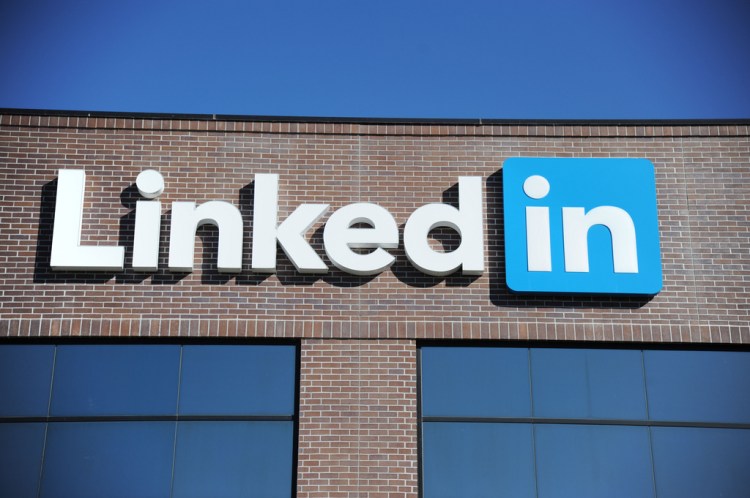LinkedIn’s valuation has been hotly debated by everyone from technology publications to Wall Street insiders in recent months. According to Morgan Stanley’s analysts, “continued faster than expected deceleration and/or misexecution will likely cause the stock to be range-bound (best case) or trend toward our bear case valuation (US$60/share).”
Some have argued that the mechanics of the network make it nothing more than a spam engine. Others, like Morgan Stanley, have argued that we overestimated growth based on LinkedIn’s newer product offerings, such as Lynda and Sales Navigator.
Of course, it’s no surprise that the tech world blames product design and network effects and the large financial institutions chalk it up to “mis-execution.”
But is it really that simple? I find it hard to believe that a juggernaut like LinkedIn suddenly lost the ability to execute. You can argue that LinkedIn’s ads and recruiting tools need refinement, but that hardly explains the company losing half its value. LinkedIn has actually been quite successful with its advertising network; it saw a 20% increase in revenue generated by LinkedIn ads last year. So what’s really going on?
For those familiar with social networks and enterprise software, it’s no mystery: LinkedIn has a business model conflict.
LinkedIn is a social network masquerading as an enterprise software company. The tension between those two models is literally ripping the company apart and alienating users and enterprise customers alike. Such is the natural effect of the walled garden approach in social networks, where your relevance diminishes as you lock-down access.
I spy enterprise maneuvers
It’s impossible to be both a massive Internet-scale social network and an enterprise software company at the same time. The former depends on open platforms and third-party developers, the latter on proprietary software sold to businesses that expect measurable ROI.
Last year, LinkedIn closed off its API and shut out enterprise software developers it saw as competitors, limiting customer choice, while putting the onus entirely on itself to serve the enterprise customer. Even worse, it used a broad definition of “competitive services.” As a result, solutions and specialized capabilities that LinkedIn has no intention or capacity to develop itself are also locked out of the walled garden.
This was the defining moment when the company began the shift towards enterprise software, and the strategy is already starting to backfire. The move left a lot of people hanging — not only third-party developers like Salesforce but also individual users of tools like Sales Navigator.
We’ve seen this before with Twitter, and we know how that story ends.
LinkedIn has become a jack of all trades and a master of none. It’s a mass-scale social network, an advertising platform, a recruiting technology solution provider, a sales-prospecting tool, an online training platform, and more — a veritable stack vendor in the age of no-stack software
Most importantly, it didn’t build that stack, it acquired it one piece at a time. The Bizo write-down is just one example. Analysts are already concerned that while LinkedIn’s largest acquisition, Lynda, is a market leader, CEO Jeff Weiner has stated it will “require greater investments than previously anticipated” to scale and integrate it.
It’s high time LinkedIn got back to what it’s truly good at – the stuff that got it to its peak not too long ago.
Righting the ship
LinkedIn needs to focus on what it does well and revive its social network business model to stimulate growth. That starts with selling ads and recruiting solutions — the core of LinkedIn’s business.
Ads are high-growth, particularly on mobile where Mary Meeker cites 34% year-over-year growth.
Recruiting solutions play to LinkedIn’s strength: the size and orientation of its network. Even more importantly, it’s the one area where business customers and individual users are aligned. Companies need help filling jobs, and consumers need help getting jobs.
LinkedIn’s own research points out that “finding candidates in high-demand talent pools” is the top obstacle for recruiters this year. Who better than LinkedIn to help solve that problem? After all, talent solutions are LinkedIn’s biggest revenue driver.
But none of that matters to the company’s long-term sustainability if it doesn’t open up its APIs again — and more broadly than before. Through monetizing access to its APIs, LinkedIn will be tapping a dormant, but lucrative, revenue stream. Enterprise developers are willing to pay for access because they understand the value of data and access to the world’s largest professional network. LinkedIn can leave it to enterprise-focused companies to build a high-value layer on top of the network, provide customers with choice, specialization, and quality, and get a healthy piece of the action.
Any number of monetization models could work, and virtually all of them would give LinkedIn a risk-free path to sustainable, high-growth enterprise revenue — which, incidentally, is exactly what the analysts have been asking for.
LinkedIn should not be so bold as to assume it will forever have the monopoly in professional social networks; we’ve already seen a demand for alternative solutions emerge — together with several competitors. But what sets LinkedIn apart and what could be its ticket to renewed growth is its enormous social graph. To realize that value, all the company has to do is open up its API and let developers do what they do best.
None of this is rocket science. It’s just good old capitalism at work. If vendors, customers, and partners are all aligned, they all reap the rewards of a healthy ecosystem.
Hank Nothhaft Jr. is founder and CEO of TrapIt. You can follow him on Twitter.


